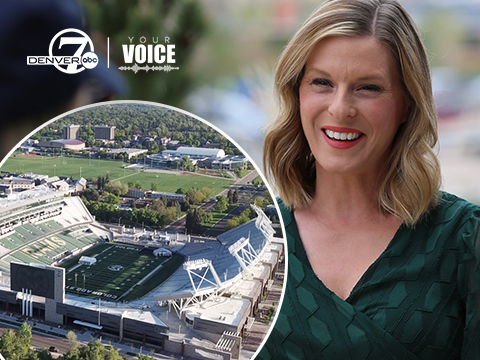LOUISVILLE, Colo. — Earlier this week, Denver7 reported on a pilot program in Boulder that's using cattle to mitigate wildfire risk in grassy, open spaces. As it turns out, this initiative took advice from a similar program in nearby Louisville, which began after the Marshall Fire in December 2021.
Louisville has successfully integrated cattle grazing into its land management strategy for a few years. This approach not only helps keep families safe but also promotes soil health and preserves native grasses.
“Cattle are something we can always rely on to get out there and do the work,” said Nathaniel Goeckner, natural resource manager with Louisville’s Open Space Department.
According to Goeckner, the grazing cattle address the length and amount of grass to significantly reduce potential wildfire fuel.
Louisville has utilized cattle for several years to reintroduce historic grazing patterns to open space areas. Many native grasses co-evolved with hooved animals.
“Historically, this area would have supported large herds of bison, elk, pronghorn antelope, and mule deer,” Goeckner said.

Local ranchers provide the cattle, which graze on 120 acres over two weeks. Temporary pastures are established using electric fencing to move the livestock from field to field, a practice that enhances land stewardship while providing ranchers, like Andy Breiter, owner of Gramagrass and Livestock, a path to sustainability.
“I’m a first-generation farmer,” Breiter said. “All my employees are first-generation farmers, and there’s a lot of hurdles to be able to get started in farming.”
Breiter said land access in an area where real estate isn’t cheap makes partnerships with local governments and other landowners vital for emerging farmers. Breiter can be a rancher without actually owning any land, and Louisville compensates him for providing his cattle.
Breiter's business model centers on holistic management practices.
“To really steward that land, we need to put animals on it,” he stated. “Cattle can mimic those bison or elk or antelope that roam through here. They have a very similar stomach.”
The grazing sites aren't just about keeping families and homes safe from wildfires; it’s also about maintaining the health of the ecosystem.
“We’re restoring health to the landscape, also mitigating wildland fuels. Overall, I think it just kind of paints a picture that we’re trying to look at this as holistically as possible," Goeckner said.
As for the cattle themselves, the grazing may appear to them as just another day of munching grass. However, the impact of their feeding helps to prevent future wildfires, ensuring community safety and preserving the native ecology.
-
Click here for more stories Denver7 revisited

-

Digital Originals
Future Flight 629 memorial in Weld County has a site, they just need your help
-

Digital Originals
70 years later: A place to reflect, honor victims of United 629 plane bombing
-

The Follow Up
Families of United Flight 629 victims gather to remember lives lost 70 years ago






